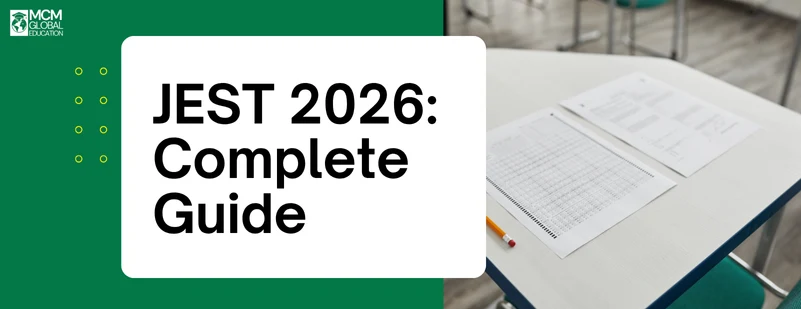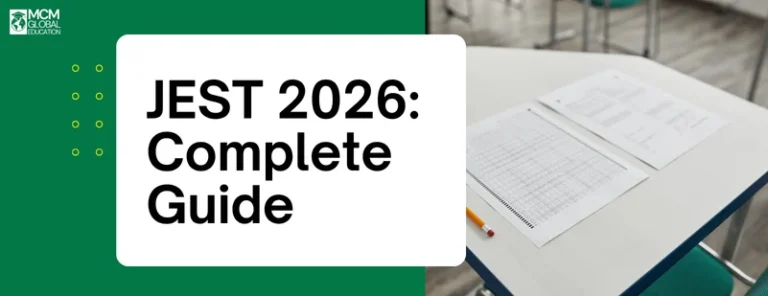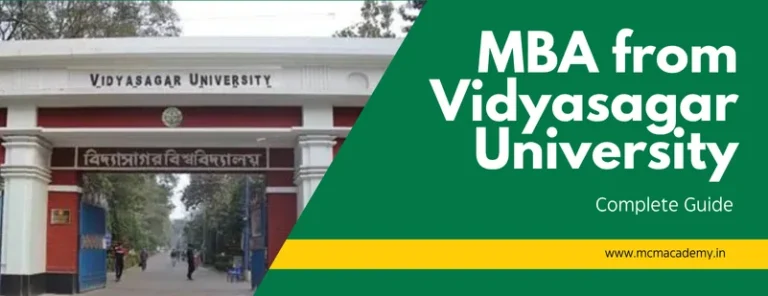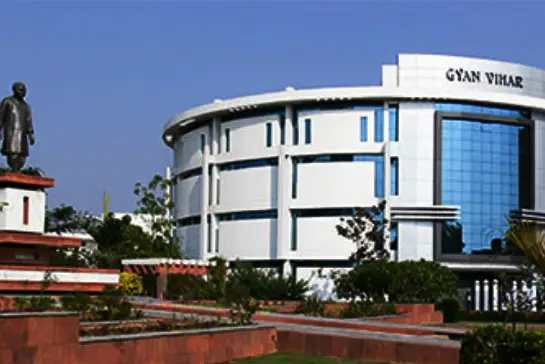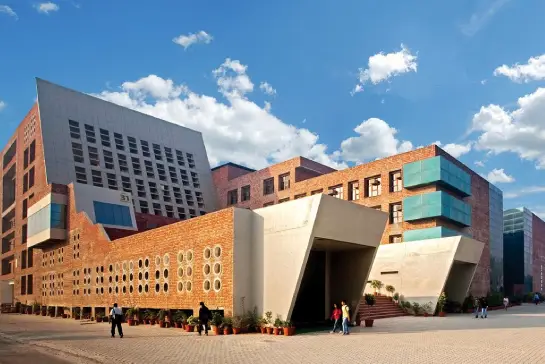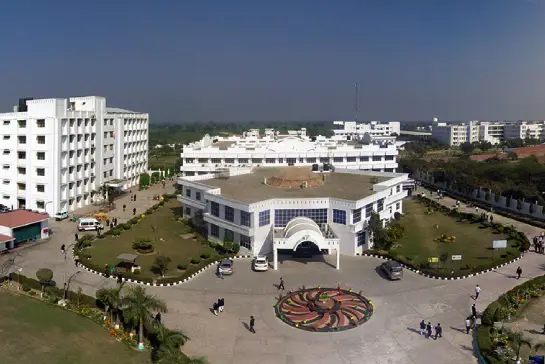Are you considering an IIIT Lateral Entry into one of India’s top technological institutes? This detailed blog covers everything you need: what lateral entry means, eligibility, application process, exam pattern, syllabus, seat matrix, fees, preparation strategies, and career prospects.
Table of Contents
What is IIIT Lateral Entry?
The term IIIT Lateral Entry refers to admission into an Indian Institute of Information Technology (IIIT) through a transfer or second-year/third-year entry route, instead of the normal first-year admission via JEE.
For instance, IIIT Hyderabad conducts a Lateral Entry Entrance Examination (LEEE) for students from other engineering institutions who have completed a few semesters and wish to join the dual-degree program (B.Tech + MS by Research) through lateral entry.
In simpler terms: if you’re already pursuing a B.E./B.Tech and want to migrate to a reputed IIIT after a couple of years, the IIIT Lateral Entry route allows you to do that. It’s often called a “second chance” for students aiming to study in a top-tier institute.
Why Consider IIIT Lateral Entry?
Here are the top reasons to choose the IIIT Lateral Entry pathway:
- Access to premier institutes: Gain entry into India’s top IIITs with strong faculty, labs, and placements.
- Dual-degree advantage: Most IIIT lateral entry programs lead to a B.Tech + MS by Research, giving you both an engineering degree and research exposure.
- Switch to a better college: If your current college doesn’t meet your expectations, you can transition to a more reputed institution.
- Enhanced placements and networking: IIITs attract top recruiters and research collaborations.
- Shorter duration (in some cases): Credit transfers may reduce your total study duration.
While the IIIT Lateral Entry route is promising, it is also competitive and requires solid preparation.
Eligibility Criteria for IIIT Lateral Entry
Eligibility conditions vary across institutes, but here are the general criteria:
| Criterion | Details |
|---|---|
| Previous Qualification | B.E./B.Tech students who have completed 4 semesters (2 years) in a relevant engineering discipline. |
| Discipline Requirements | For CSD (Computer Science Dual-Degree): B.E./B.Tech in CSE / IT / AI / Data Science / Software Engineering. For ECD (Electronics & Communication Dual-Degree): B.E./B.Tech in ECE / EEE / EIE / Instrumentation, etc. |
| Minimum Academic Performance | At least 80% aggregate or 8.0 CGPA by the time of application. |
| Completion of Semesters | Students must have completed up to the 4th semester by the admission year. |
| Other Requirements | Transfer of credits may depend on syllabus equivalence and academic performance. |
Note:
- The IIIT Lateral Entry option is usually available for dual-degree programs (B.Tech + MS).
- Diploma holders are generally not eligible for this route.
- Always confirm year-specific eligibility directly from the institute’s official notice.
Programme Structure & Seat Matrix
Under the IIIT Lateral Entry system, selected students join directly in the dual-degree program, usually from the third year onward.
| Feature | Details |
|---|---|
| Institute | IIITs (Example: IIIT Hyderabad) |
| Program Offered | Dual-Degree: B.Tech + MS by Research |
| Entry Mode | Lateral Entry after 2 years of B.E./B.Tech |
| Duration | Approx. 4 years (depending on credit transfers) |
| Degrees Awarded | B.Tech (Hons) + MS by Research |
| Disciplines Offered | Computer Science (CSD) and Electronics & Communication (ECD) |
This structure enables students to pursue research-oriented education while completing their engineering degree.
Application Process for IIIT Lateral Entry
Below is a step-by-step overview of the typical IIIT Lateral Entry process:
- Notification: Institutes release the official notification for lateral entry admissions (usually in February or March).
- Online Registration: Applicants fill out the form with personal and academic details and upload documents.
- Application Fee Payment: Pay a nominal non-refundable fee (around ₹3,000).
- Admit Card Release: The admit card is available online before the exam.
- Entrance Examination: Appear for the IIIT Lateral Entry exam (LEEE or equivalent).
- Interview Round: Shortlisted candidates are invited for an online or in-person interview.
- Seat Confirmation: Selected candidates pay the acceptance fee and first-semester tuition.
- Program Onboarding: After verification, students begin their dual-degree program.
Important Dates (Example Timeline)
| Event | Tentative Date |
|---|---|
| Application Opens | February |
| Last Date to Apply | March End |
| Exam Date | April |
| Interview Date | May |
| Academic Session Begins | July |
Exam Pattern & Syllabus for IIIT Lateral Entry
The IIIT Lateral Entry exam (e.g., LEEE) tests your mathematical aptitude and subject knowledge.
Exam Pattern
| Section | Duration | Description |
|---|---|---|
| Aptitude Test | 1 Hour | Logical reasoning, analytical skills, and general aptitude. |
| Subject Test | 2 Hours | Discipline-specific (CSD or ECD) questions. |
| Marking Scheme | Negative marking (−25% for wrong answers). | |
| Mode of Exam | Computer-Based Test (CBT). |
Syllabus Overview
Mathematics (Common Section):
- Linear Algebra: Matrices, determinants, eigenvalues & eigenvectors.
- Probability: Bernoulli, Binomial, Poisson, Gaussian distributions.
- Calculus: Limits, continuity, differentiation, integration, series, and ODEs.
- Advanced Topics: Partial derivatives, optimization, convergence tests.
CSD (Computer Science & Engineering) Topics:
- Digital Logic
- C Programming
- Data Structures and Algorithms
- Discrete Mathematics
- Problem Solving and Computational Logic
ECD (Electronics & Communication Engineering) Topics:
- Circuit Theory and Networks
- Electronic Devices and Circuits
- Digital Logic Design
- Signals and Systems
Preparation Tips
- Strengthen your mathematical foundation and core subject concepts.
- Solve mock tests and previous year papers regularly.
- Focus on data structures, programming, and electronics fundamentals based on your discipline.
- Prepare thoroughly for the interview – highlight projects, internships, or research interests.
- Join study groups or online forums for guidance from past aspirants.
Fees & Financial Details
Here’s an indicative breakdown of the IIIT Lateral Entry program costs:
| Component | Approximate Fee (INR) |
|---|---|
| Tuition Fee (per year) | ₹4,50,000 |
| Hostel + Mess (per semester) | ₹50,000 |
| Seat Acceptance Fee | ₹10,000 (Non-refundable) |
| First Semester Fee (on admission) | ₹2,25,000 |
| Refund Policy | Refunds depend on withdrawal date and institute policy. |
Scholarships & Financial Aid
- IIITs provide merit-based scholarships and assistantships for dual-degree students.
- Some students receive research fellowships during the MS component of their program.
- External scholarships (AICTE, UGC, or private foundations) may also apply.
Career Prospects After IIIT Lateral Entry
Pursuing an IIIT Lateral Entry opens several doors for career growth:
1. Research & Higher Education
- Gain hands-on research exposure through the MS component.
- Strong foundation for pursuing PhD or M.S. abroad.
- Opportunity to publish academic papers and research projects.
2. Industry & Placements
- IIITs have excellent placement records with top recruiters in tech, R&D, and core engineering.
- Companies such as Google, Amazon, Microsoft, Qualcomm, and Intel frequently recruit IIIT graduates.
3. Entrepreneurship & Innovation
- Many IIIT students launch startups during or after their studies.
- Research-driven learning fosters innovative problem-solving.
4. Return on Investment (ROI)
- Though fees are high, the ROI is strong due to higher starting packages and global opportunities.
Pros & Cons of IIIT Lateral Entry
| Pros | Cons |
|---|---|
| Access to premier institutes mid-way through engineering. | Highly competitive with limited seats. |
| Dual-degree advantage (B.Tech + MS by Research). | Higher tuition fees. |
| Enhanced research and placement opportunities. | Possible credit transfer complications. |
| Opportunity to switch from an average to a reputed college. | Adapting to a new academic environment. |
FAQs About IIIT Lateral Entry
Q1. Can diploma holders apply for IIIT Lateral Entry?
No. Diploma holders are generally not eligible. The program is for B.E./B.Tech students only.
Q2. What is the minimum CGPA required?
A minimum of 8.0 CGPA (or 80%) by the end of the 4th semester is typically required.
Q3. Are all branches eligible?
No. You must belong to a relevant discipline (e.g., CSE/IT for CSD, or ECE/EEE for ECD).
Q4. Is credit transfer guaranteed?
Credit transfer depends on the similarity of syllabi and performance in prior semesters.
Q5. How many seats are available for IIIT Lateral Entry?
Seats are extremely limited and vary by institute each year.
Preparation Strategy: Step-by-Step
Year 1–2 (Current College):
- Build strong fundamentals in core subjects and maintain a high CGPA.
- Start coding practice or circuit design work early.
6–12 Months Before Exam:
- Study the LEEE syllabus and identify weak areas.
- Take online mock tests to assess speed and accuracy.
3 Months Before Exam:
- Focus on mathematics, aptitude, and technical problem-solving.
- Prepare for potential interview questions about your projects or motivations.
After Selection:
- Prepare documentation for credit transfer and fees.
- Plan your relocation and orientation for the new institute.
IIIT Lateral Entry vs Normal Entry
| Feature | Normal JEE Entry | IIIT Lateral Entry |
|---|---|---|
| Entry Time | 1st Year | 3rd Year (after 2 years elsewhere) |
| Admission Basis | JEE Main/Advanced | Institute Lateral Entry Exam (LEEE) |
| Duration | 4–5 Years | Around 4 Years (with credit transfer) |
| Degree Type | B.Tech or Dual Degree | B.Tech + MS by Research |
| Competition | High (many seats) | Very High (few seats) |
| Cost | Standard Fees | Slightly Higher |
| Benefit | Traditional route | Opportunity to upgrade institute mid-way |
Key Takeaways
- Start early and maintain strong academic performance in your current college.
- Focus on core subjects relevant to your branch.
- Prepare strategically for the IIIT Lateral Entry Exam.
- Keep documentation ready for credit transfer and verification.
- Weigh the cost-benefit ratio carefully — though expensive, the returns in placements and learning are excellent.
Conclusion
The IIIT Lateral Entry pathway is a golden opportunity for engineering students seeking a leap into India’s top institutes after starting elsewhere. It provides a second chance to join a research-driven, globally recognized environment and earn a dual degree that enhances both academic and professional prospects.
However, it demands determination, solid preparation, and academic consistency. If you are serious about upgrading your education and ready to work hard, the IIIT Lateral Entry route can transform your career trajectory.


